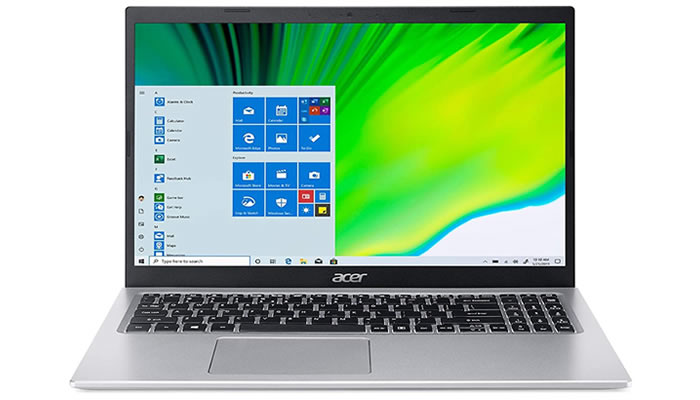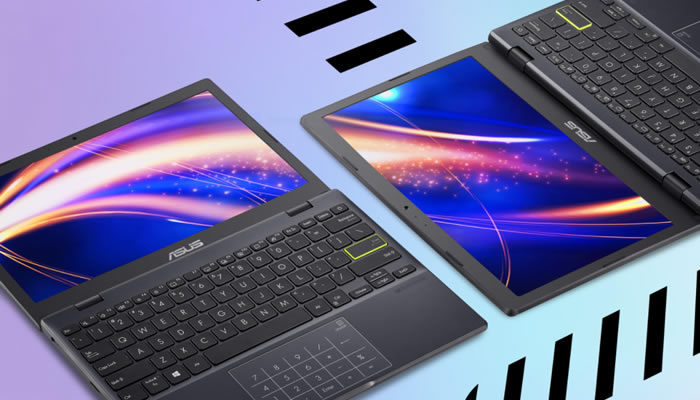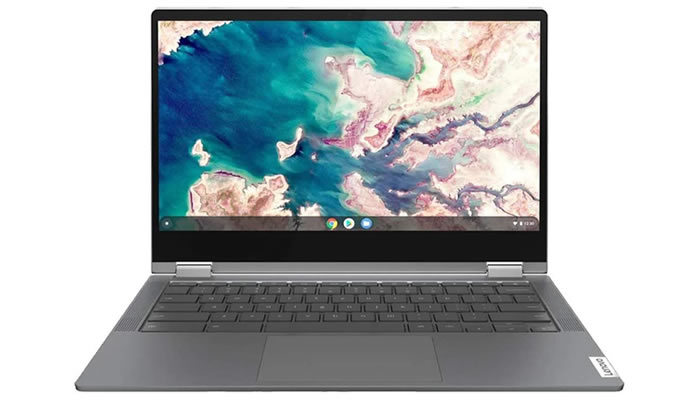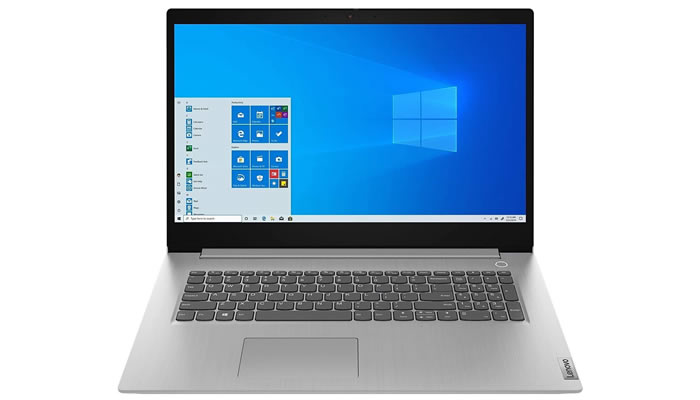When we think of affordable notebooks, we think of compromise. It’s true that manufacturers have to cut some corners to keep prices of budget laptops down. However, there are always a couple of models which are better equipped than others for the challenges of everyday computing. I’ve looked at more than 50 laptops currently on sale to determine which models offer the best possible value for your money.

As a general rule of thumb, you should take into account a couple of things. First, try and buy the most performance for your budget. For instance, an Intel Core i3, although an entry-level CPU in its own right, is much more desirable than a Celeron for everyday tasks.
Most affordable models are saddled with 4 gigabytes of system memory. Aim for 8 gigabytes if possible. If not, try to score a model with expandable RAM. While system memory is perhaps the most important upgrade factor to consider, don’t forget about storage space. Aim for a laptop with a faster M.2 PCIe solid state drive if your budget allows it.
You should be prepared to settle for mostly dim and average displays, slightly outdated wireless technology and no cutting edge ports, such as Thunderbolt 4. Bulky construction, cheap materials, shallow keyboards are given, with a few notable exceptions.
Best laptops under $500 you can buy in 2021
What should you expect from a budget-friendly notebook? Realistically speaking, finding out which laptop under $500 is best for your needs will imply making a choice. Think of it like a game. Since price is out of the question, you’ll have to settle for two out of the following three traits: build quality, performance and portability.
You can’t have all three for less than $500, but you can sacrifice one and end up with a device that won’t let you down. Adjusting your expectations accordingly is, therefore, essential when balancing out the options highlighted in this article.
Below, you’ll find this year’s most desirable laptops you can buy for less than $500:
1. ASUS VivoBook 15 F512JA-AS34
The best sub $500 all-rounder, by far.

Price when reviewed: $457
Processor: Intel Core i3-1005G1 | Memory: 8GB RAM | Storage: 128GB SSD | Graphics: Intel UHD Graphics 620 | Display: 15.6″ FHD | Weight: 3.7 lbs. | Battery Life: 6-7 hours
The 15-inch ASUS VivoBook 15 F512JA-AS34 offers by far the best bang for your buck. When it comes to raw performance, there’s simply not much competition around. This model ticks almost all boxes which make a cheap laptop great.
For less than $500 you get a rather speedy Intel Core i3 processor alongside 8 gigabytes of system memory. At the moment, there are no laptops selling for less than $500 with more than 4 gigabytes of RAM. It also has a decent battery life for what its worth and doesn’t weigh that much, but still considerably more than an ultraportable.
Sure, the Vivobook 15 is all-plastic. It feels like a cheaper laptop, but it isn’t cheaply made, as it benefits from the latest innovations from ASUS, like thin bezels, new hinge design and competitive interface options.
There’s only one drawback: display quality. It simply isn’t that great. However, considering its price and specs, I can’t complain about it not having a really engaging display.
The Vivobook 15 is a fantastic laptop as far as affordability is concerned, perfect for college students on a tight budget.
2. Acer Aspire 5 A515-56-363A
Above average display and battery life.

Price when reviewed: $449
Processor: Intel Core i3-1115G4 | Memory: 4GB RAM | Storage: 128GB SSD | Graphics: Intel UHD Graphics | Display: 15.6″ FHD IPS | Weight: 3.64 lbs. | Battery Life: 6-8 hours
Your second best bet for a laptop under $500 is the Acer Aspire 5, especially if you value display quality above everything else. The Acer features a slightly brighter screen, better viewing angles and more vivid color reproduction. Therefore, I’ve found it to be a multimedia oriented laptop first and foremost, especially if you don’t plan on upgrading its hardware.
Concerning performance, the Acer is equipped with less system memory than the ASUS, just 4 gigabytes of DDR4 RAM. This amount is just enough to run Windows and your everyday apps. But don’t expect it to lift much in terms of multitasking. You can always upgrade and double it by buying an additional 4GB compatible memory module. In fact, it’s advisable to do so. This way, you’ll end up with a much more robust and versatile notebook, slightly outclassing the ASUS VivoBook 15.
The Acer Aspire 5 is also saddled with a brand new, 11th generation Intel Core i3-1115G4 processor. Compared to the Intel Core i3-1005G1 we’ve seen inside the VivoBook, this model should outperform the ASUS by about 10% in terms of raw processing power. However, it’s unlikely for any casual user to notice any meaningful difference between the two in real world scenarios. Still, a newer processor means you get a more future-proof device, so there’s that.
Shame that Acer haven’t equipped the Aspire 5 with 8 gigs of RAM. I would have considered it to be the best choice for a laptop under $500 at the moment.
3. ASUS L210 (L210MA-DB01)
The ultraportable and ultra-affordable choice.

Price when reviewed: $229
Processor: Intel Celeron N4020 | Memory: 4GB RAM | Storage: 64GB eMMC | Graphics: Intel UHD Graphics 600 | Display: 11.6″ HD | Weight: 2.2 lbs. | Battery Life: up to 10 hours
Perhaps unsurprisingly, the best laptop you can buy for less than $250 is also an ASUS. The 11-inch ASUS L210 is a perfect example of a rather niche notebook that is well suited for a larger than anticipated audience.
Don’t expect much from the ASUS L210 in terms of performance. Its entry-level Intel Celeron won’t take you far. Thus, you should limit yourself to the most basic of tasks when working on it. Think browsing, emails, editing documents, writing essays and so on.
That being said, this is by far the most ultraportable budget-friendly Windows laptop. What’s more, it’s one of the cheapest models you can buy right now, for less than $250. Sure, display quality leaves much to be desired, as well as overall performance.
However, the ASUS L210 offers increased mobility, long lasting battery life, great build quality and more features than you’d hope for at this price: backlit keyboard, 180 degree hinge and a touch-enabled numpad.
4. Lenovo Chromebook Duet
The best detachable Chromebook.

Price when reviewed: $279
Processor: MediaTek Helio P60T | Memory: 4GB RAM | Storage: 64GB eMMC | Graphics: ARM G72 MP3 | Display: 10.1″ FHD | Weight: 2 lbs. | Battery Life: up to 10 hours
Check price on Amazon or Lenovo
Lenovo’s Chromebook Duet has been a hit ever since it was launched. It’s an inexpensive and ultraportable detachable that won’t make a dent in your finances. Considering how affordable the Duet is, I’d say its performance ratings are on par with the ASUS L210 I mentioned above.
I can’t really compare the two because they run on different operating systems. The Lenovo runs Chrome OS, for which its MediaTek processor is rather adequate. Most everyday apps should run smoothly, without any lag or hiccups. Its 4 gigs of system memory are also sufficient for an entry-level Chromebook to tackle the needs of casual users.
The Duet’s Full HD display is rather impressive. The 10-inch screen is brighter than the screens of most mid-range laptops and as bright as those seen on premium ultrabooks. Working in full sunlight conditions is achievable, especially thanks to its IPS technology, something we don’t normally see on inexpensive devices.
It’s also extremely lightweight, weighing just 2 pounds (keyboard included). Its battery will last for 8 to 10 hours under normal stress, which is enough for a full day’s worth of work.
Build quality is spectacular, given how cheap it is. Overall design is understated. A discrete two-tone fabric texture adorns the stand cover. Its magnetic clasp works beautifully, making this Lenovo Chromebook feel sturdier than it looks.
5. Lenovo Chromebook Flex 5
The most versatile budget-friendly Chromebook.

Price when reviewed: $409
Processor: Intel Core i3-10110U | Memory: 4GB RAM | Storage: 64GB or 128GB SSD | Graphics: Intel UHD Graphics | Display: 13.3″ FHD | Weight: 2.97 lbs. | Battery Life: 8-10 hours
Check price on Amazon or Lenovo
The Lenovo Chromebook Flex 5 is a spectacular device. A brighter than expected display, solid build quality and decent performance make it the most well-rounded Chromebook device you can buy right now.
It’s equipped with a 10th generation Intel Core i3 processor, four gigabytes of system memory and, depending on the model, 64 or 128 gigabytes of storage space. Considering price, these specs alone should be a strong enough argument for the Chromebook Flex 5. A device which is almost as good as more premium Chromebooks for less than $500 is a fantastic deal.
Furthermore, it features a bright FHD display with nice viewing angles. It’s glossy, so you will notice some reflections in full sunlight conditions. However, considering its superior brightness, these aren’t as upsetting as they could have been.
Touch capabilities are on par with more expensive notebooks. Hinges are solidly built, enabling the Flex 5 to fully rotate and transform into a tent or tablet without any friction whatsoever.
Not the most lightweight of 13-inch laptops, its weight shouldn’t be much of an issue for students or commuters. At around 3 pounds, with a battery life of 8 to 10 hours, this Chromebook makes for a great partner on the road. That is if your daily routine consists of mainly casual computing like editing documents, sending emails and such. The Duet is better from a portability standpoint, but the Flex 5 offers much more in terms of processing power.
6. Lenovo IdeaPad 3 17IIL05
Best 17-inch desktop replacement.

Price when reviewed: $485
Processor: Intel Core i3-1005G1 | Memory: 8GB RAM | Storage: 256GB SSD | Graphics: Intel UHD Graphics | Display: 17.3″ TN HD+ | Weight: 4.85 lbs. | Battery Life: 6-7 hours
The Lenovo IdeaPad 3 17IIL05 I’ve recently reviewed is a 17-inch notebook well suited to act as a desktop replacement or simply as a daily driver, multimedia machine around the house or as an office laptop.
It offers solid performance, especially considering they’ve managed to keep the price just under $500. It’s fitted with 10th generation Intel Core i3 CPU, 8 gigabytes of system memory and 256 gigabytes of storage space. Basically, the Lenovo features the same components as the impressive ASUS VivoBook 15, with the added benefit of having twice as much storage capacity.
The IdeaPad’s main drawback is its display. It has a TN panel, which will make viewing angles rather narrow. Also, at 250 nits, its brightness leaves much to be desired. As well as resolution. But if you can sail past how much of a letdown its display is, the Lenovo will make for a great laptop to have around the office. It’s well suited to tackle spreadsheets, documents, video calls, and much, much more.
If you need a big screen but don’t mind the actual quality of it, this is the best laptop to have right now. Impressive specs, low price, Lenovo build quality and above average battery life make it a front runner among affordable 17-inch laptops.
What to look for in a laptop under $500
Knowing what to expect from a laptop under $500 can save you money now, and headaches later. There are no perfect budget laptops. You’ll just have to make some sort of compromise somewhere.
According to our very own laptop buying guide, you can pick a maximum of 3 out of 4 important features when buying most laptops: build quality, performance, portability and price. The same general principle applies to budget laptops by removing the low price out of the picture. You’re left with choosing 2 out of the remaining 3 traits.
Performance: plan for the future
An affordable laptop will not take you very far if your expectations are sky high. Almost all models feature entry-level processors. The cheaper you go, the less performance you get. As a general rule of thumb, if your new laptop budget is less than $500, always aim for the most expensive models you can get within your budget. Don’t underspend.
With laptops, more affordable usually means cheaper. A laptop that barely keeps up today will surely underperform later on. Although not all notebooks are created equal, we recommend buying one with an Intel Core i3 processor or equivalent, 8 gigabytes of RAM if possible and an SSD to keep up with increased software demands for at least some couple of years.
Performance-wise, such a laptop is not far away from a mid-range device. As much as everyday tasks are concerned, you’re unlikely to notice that much of a difference between it and a $700+ Core i5 laptop.
Portability: know when to compromise
As I’ve mentioned earlier, you can’t have a perfect laptop for under $500. You’ll have to be honest with yourself and think what is it that you want your laptop to do best.
If it’s portability that you’re after, you’ll have to settle for a smaller screen size. Affordable laptops aren’t normally built with ultra light materials, so they use size as leverage. Also, some of these laptops sacrifice performance for battery life. Look for devices with low TDP processors, lower resolution displays if you don’t mind, which don’t drain the battery as fast as full HD ones or for smaller displays. Ideally, you’d want a 14″ laptop instead of a 15.6″ one, simply because it’s likely to be more energy efficient.
Price: wait it out
Patience is usually the name of the game. You can get your hands on a laptop that exceeds your budget during important sale events, like Black Friday, Cyber Monday, and so on.
Keep an eye on aggressively priced notebooks. Especially on those who sell for $50 to $100 above your maximum budget. Take the popular Acer Aspire 5 A515-56-50RS for example, or the ASUS VivoBook 15 F515EA-DS54. These models usually go for more than $500, yet during sales their prices drops significantly lower, essentially making them much more attractive for those on a tight budget.